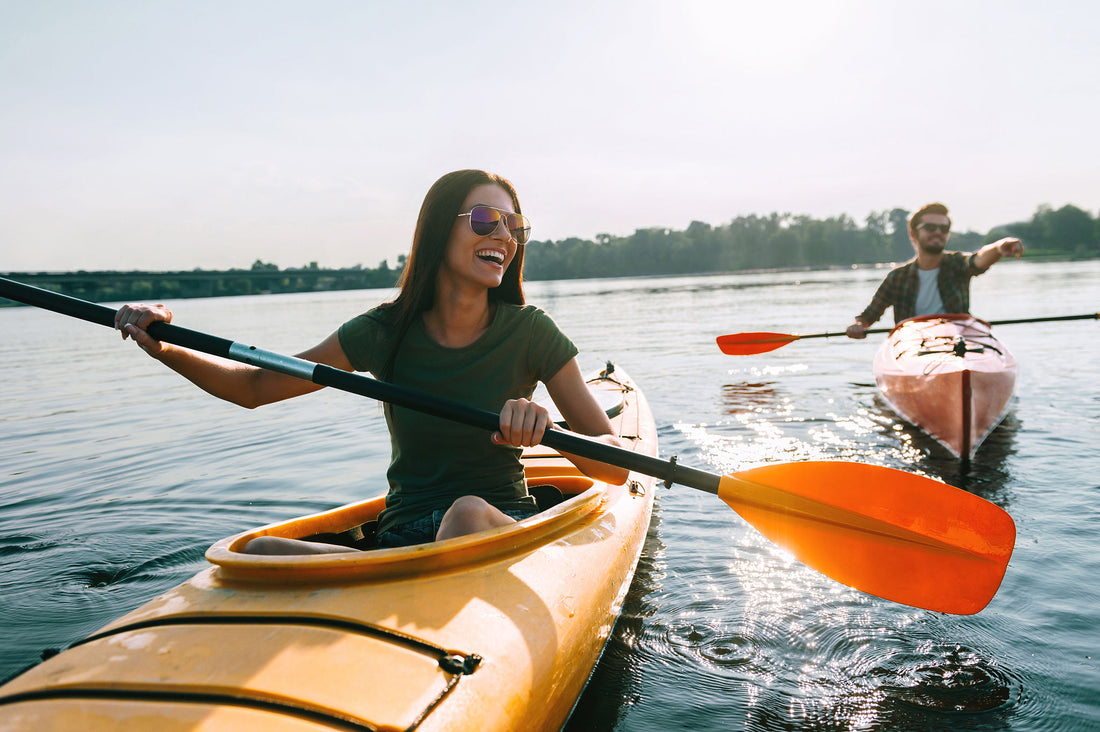Introduction:
As we stand on the cusp of a new era, the world of kayaking is evolving, driven by advancements in technology, environmental awareness, and changing consumer preferences. In this exploration of the future, we will delve into the trends and innovations shaping the next phase of kayaking, a sport that has captivated adventurers for centuries.
Paragraph 1:
**Technology Integration:**
The future of kayaking is poised to embrace technological innovations that enhance safety, performance, and the overall paddling experience. Smart paddles equipped with sensors and GPS tracking will provide real-time data on strokes, speed, and distance covered. Integrated navigation systems will guide paddlers through waterways, ensuring a seamless and enjoyable journey. Additionally, advancements in materials and manufacturing techniques will lead to lighter, more durable kayaks, pushing the boundaries of design and performance.
Paragraph 2:
**Electric and Hybrid Propulsion:**
As sustainability becomes a focal point in the outdoor recreation industry, the future of kayaking may witness a shift towards electric and hybrid propulsion systems. Electric-assist kayaks, powered by rechargeable batteries, will allow paddlers to cover greater distances with less effort. Hybrid models may combine traditional paddling with electric propulsion, offering versatility for various water conditions. This evolution aligns with the global push towards eco-friendly practices in recreational activities.
Paragraph 3:
**Virtual Reality (VR) Experiences:**
Immersive technologies, such as virtual reality, are likely to find their way into the world of kayaking. Paddlers could use VR headsets to simulate diverse water environments, from tranquil lakes to challenging rapids, all within the safety of controlled settings. This innovation not only caters to training and skill development but also opens up kayaking experiences to individuals who may not have access to natural water bodies.
Paragraph 4:
**Adventures in Augmented Reality (AR):**
Augmented reality applications have the potential to transform the way kayakers interact with their surroundings. AR goggles or heads-up displays integrated into kayak equipment could provide real-time information about points of interest, weather conditions, and even underwater topography. This merging of the physical and digital realms adds a layer of exploration and education to kayaking adventures.
Paragraph 5:
**Inclusivity and Accessibility:**
The future of kayaking is moving towards increased inclusivity and accessibility. Designs catering to individuals with diverse physical abilities will become more prevalent. Adjustable seating, easy entry and exit features, and universally accessible kayak launches will make this exhilarating water sport available to a broader demographic. The goal is to break down barriers, ensuring that everyone, regardless of age or physical condition, can enjoy the benefits of kayaking.
Paragraph 6:
**Environmental Stewardship:**
Environmental sustainability is a driving force behind future trends in kayaking. Manufacturers are increasingly exploring eco-friendly materials and production processes to minimize the sport's environmental footprint. Additionally, initiatives promoting responsible paddling practices, wildlife conservation, and waterway preservation will gain prominence. The future kayaking community is expected to be more conscious and actively engaged in protecting the natural habitats it explores.
Paragraph 7:
**Community Engagement and Events:**
The future of kayaking extends beyond individual pursuits, with a growing emphasis on community engagement. Kayaking events, festivals, and group expeditions will foster a sense of camaraderie among paddlers. Social media platforms and technology-driven networks will facilitate connections, allowing kayakers to share experiences, organize meet-ups, and participate in virtual challenges, creating a global kayaking community.
Paragraph 8:
**Education and Skill Development:**
Advancements in instructional technologies will play a pivotal role in the future of kayaking education. Online platforms, virtual coaching sessions, and interactive tutorials will make learning and improving kayaking skills more accessible. This democratization of knowledge will empower paddlers of all levels to enhance their abilities and deepen their understanding of the sport.
Conclusion:
The future of kayaking holds exciting prospects, shaped by the integration of cutting-edge technologies, a commitment to sustainability, and a dedication to inclusivity. As we navigate the evolving landscape of this timeless water sport, the fusion of innovation and tradition will continue to make kayaking an accessible, thrilling, and environmentally responsible adventure. Whether you're a seasoned paddler or a novice looking to embark on your first journey, the future promises a dynamic and enriching kayaking experience for all.

